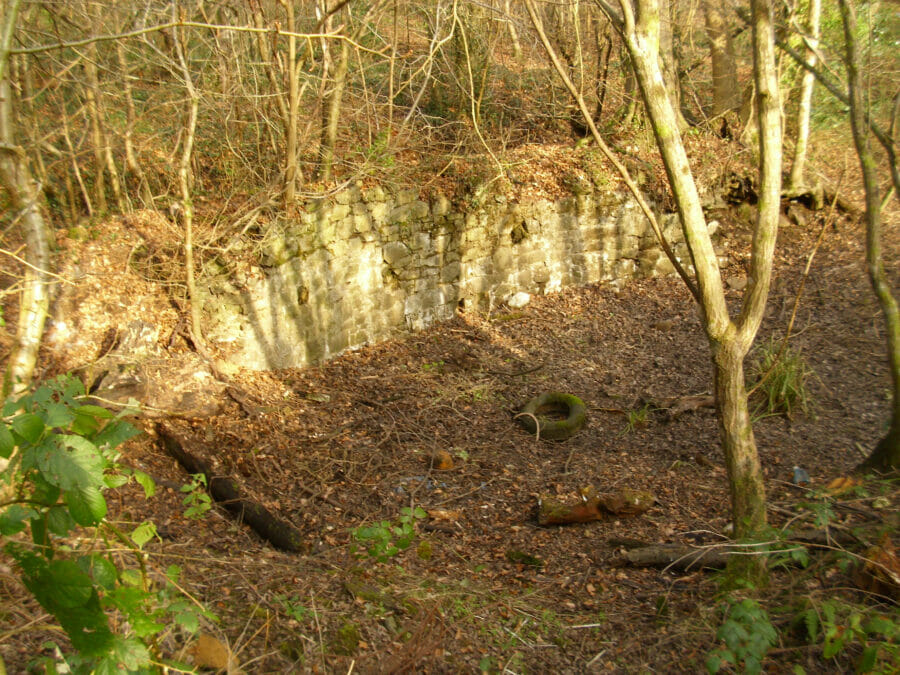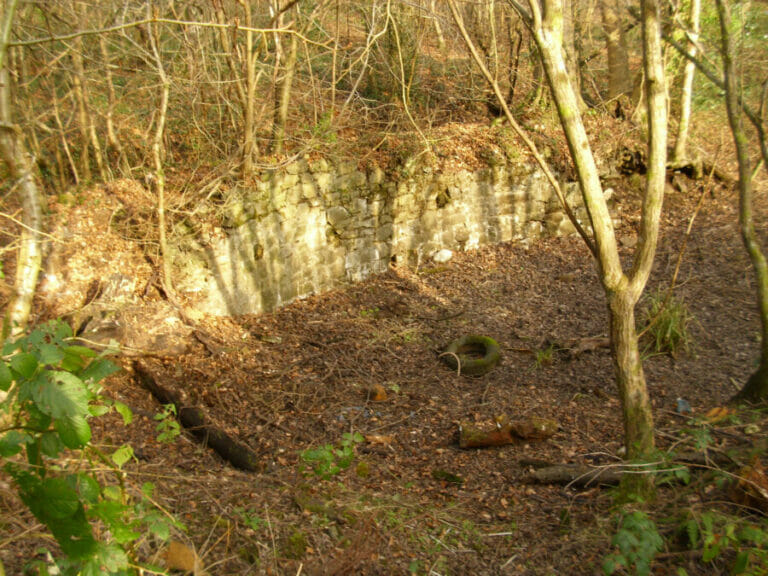Introduction
It may be hidden away in thick undergrowth and difficult to find, but it is worth making the effort to find this enigmatic coal pit. It is situated on the line of the New Mill leat and a semicircular stone revetment wall can still be seen which holds back the leat where it curves around the shaft. The site of the shaft itself is covered by stagnant water.
Nothing is known of the history of this pit. The name is a modern one and no documentary evidence survives. It does not appear on the Swansea tithe map surveyed in 1840/41 nor on the plans prepared in connection with the various railway promotions in the valley between 1845 and 1860. The only documentary evidence of its existence is the first edition of the 25 inch OS map surveyed in 1877/8 where it is marked as ‘Old Coal Pit’ with the course of an abandoned tramway leading up to it from the Clyne Valley branch of the Oystermouth Railway. The connection to the railway suggests that this could have been the colliery at ‘Ynis’ opened by John Morris in 1812. This is also suggested by the style of the surviving stonework. The records of the Oystermouth Railway, now preserved in the Richard Burton Archives (Swansea University), show that Morris had a pit at Ynis which was in production by September 1812. Tolls on ‘coals from Ynis’ were paid on the railway between December 1812 and September 1814. During that time 4,477 tons of coal were sent out. It is not known if the colliery worked again after 1814.

